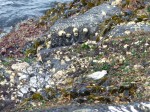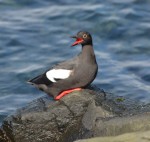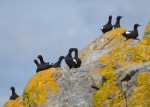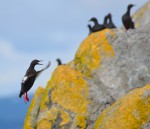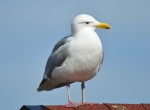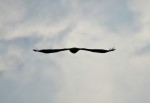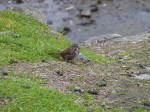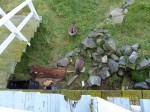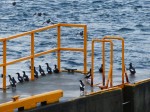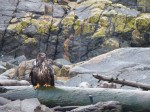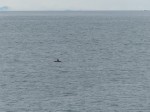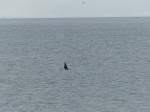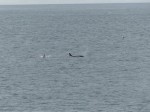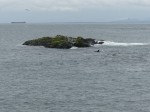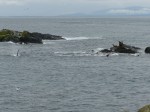Rain and Moderate West wind yesterday. Blowing hard West overnight and gusting 40+ kts. Clear today with a solid West Gale blowing.
Alex left Race Rocks on Saturday. He picked me up in the Whaler and we had a few hours of overlap to go over the changes to the systems, etc. He left when Erik came to pick up the PC Students that spent Project Week out here.
I spent yesterday settling in and puttering. Alex left the Reserve in great shape. Spring shift will be all about birds. There are lot’s of Bald eagles siting all over the island, often very close to the Keeper’s House. They are impressively large birds when you see them up close. Th Canada Geese are pairing up and honking and fighting. Mating Canada Geese are pretty terrifying creatures. In terms of sharing the island, I think I prefer the Fall Sea lions, who despite their noise and smell, are quite charismatic and fun to watch, they also don’t rush you when you’re back is turned. There is a pair of geese trying to make a nest under the South porch which makes getting firewood and going to the compost a bit nerve wracking. I will pile some wood down there and hope it deters them.
A pod of Orcas came through the reserve on Sunday. Adults and juveniles. They hung out on the East side and harassed the Sea lions on the South Rocks. A friend of mine out sailing said that they were transients, but I’m not sure. I guess I’ll have too look up how to tell the groups apart. I noticed the whales because an eco-tour boat was watching them. The boat kept its distance and idled respectfully at the edge of the Reserve. It is nice to see the tour boat operators voluntarily following the regulations set up by the Pacific Whale Watch Association for the Race Rocks Ecological Reserve where “Vessels will remain outside all of the Go Slow Zone whenever Resident, Transient or Off Shore Killer Whales are present in the Go Slow Zone.” See this link for more information about whale watching within the Reserve.
-cleared kitchen window weep holes to hopefully help with the leak issue
-dug a drainage ditch along North side of Student house








